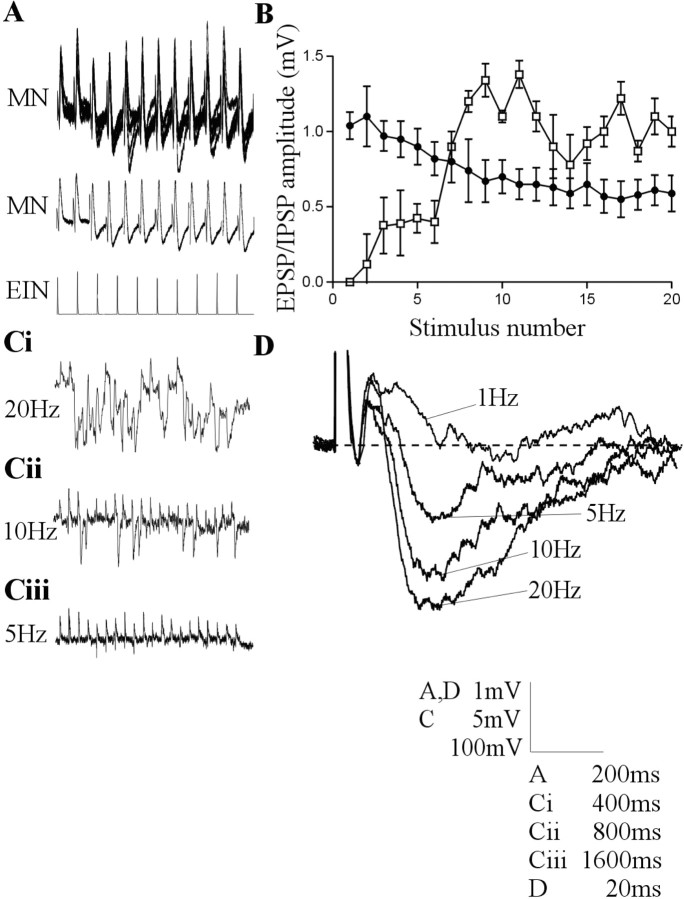Figure 1.
Intracellular stimulation of a single EIN can evoke a biphasic input in motor neurons that consisted of a direct EPSP followed by a delayed IPSP. A, Traces showing the development of a consistent biphasic IPSP over a 20 Hz spike train. The middle trace is an average of the activity shown above (n = 20 sweeps). B, Graph showing the amplitude of the monosynaptic EPSP (black circles) and the delayed IPSP (white squares) in motor neurons after stimulation of the presynaptic EIN at 20 Hz (n = 21 connections). Ci-Ciii, Traces showing the frequency-dependent development of the delayed IPSP in a single connection. In this case, the summation of IPSPs during 20 Hz stimulation effectively abolished the direct EPSP. The effect was less pronounced at 10 Hz and was absent at 5 Hz. D, The averaged delayed IPSP over a train of 20 spikes at frequencies of 1, 5, 10, and 20 Hz. The lowest voltage calibration in this and subsequent figures refers to the amplitude of action potentials on that figure.

